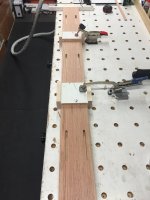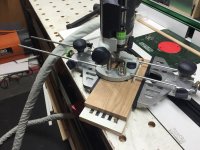Scott in San Diego
Member
- Joined
- Jan 23, 2007
- Messages
- 307
How do you make stopped flutes on a pilaster?
I am looking at using either a router edge guide on the work or sliding a router down a guide rail. I have an OF 1400 and accessories to do either or is there a better way?
I am looking at using either a router edge guide on the work or sliding a router down a guide rail. I have an OF 1400 and accessories to do either or is there a better way?



